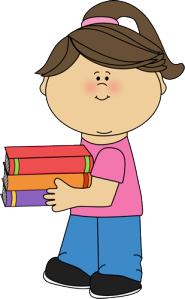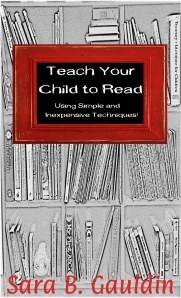“I know a child that could read when they were four. Is my child behind?”

I wish I had kept an accurate count of the people who have shared this concern with me. As a teacher and as a parent, I realize that every parent wants their child to be advanced. Parents want to feel that their offspring is on the forefront of the developmental curve. Clearly, the child should be advanced; he or she is always doing something wonderful that relates an innate intelligence, so why won’t he or she read?
The honest answer is that reading is a developmental activity, just like learning to walk, speak, potty train or tie one’s shoes. A child’s brain that is not yet developed adequately to perform the tasks involved with reading will have extreme difficulties with achieving that goal at that point in development. The four-year-old child likely is a bright, intelligent individual who will be a fabulous reader when his or her brain has sufficiently developed and has been exposed to a reasonable amount of productive activities. This in no way infers that parents should sit idly by in hopes that the child’s mind will grow, and magically some switch will flip, then they will read; that is not any more realistic than trying to teach a preschooler who is not ready to read War and Peace. Of course you should help your child learn to read! You are your child’s first and best teacher. Ultimately, parental involvement and persistence play a huge role in any child’s academic career.
One more thing to keep in mind; siblings do not always have the same developmental milestones at the same time. They are individuals and have unique strengths and abilities. Try not to give into the temptation to compare your children’s reading ability at a given age to one another!
Let’s get started!
Before a child has any hope of reading anything, groundwork must be laid. For most people the concept that math is a scaffold activity; that it builds on prior lessons, and information is both intuitive and obvious. Reading is just as dependent on building a strong foundation as mathematics yet many people focus on the result of literacy rather than the skills that reading is built upon! There are specific skills and milestones that a child must master before reading becomes possible. Let’s get started!
Begin with a reading test!
Wait! Put the paper and pencils away. This test is much simpler. If you are a concerned parent, you most likely have been reading with your child regularly for quite some time (if not start today!). This time deliberately hand your child a book upside down and backwards. Watch carefully to see exactly what the child does with the book. If they chew on it, accept that your child is a toddler and read them the story. If they open the book and look through the pages, your test is off to a good start. This is where the power of observation will give you a clue about how reading-ready this little person actually is. If the child continues to hold the book upside down and/or backwards and does not seem to notice any difference, then Left to Right Progression is most likely where you need to begin.
There is no magic trick to teaching this skill. Like many tasks in knowledge acquisition, repetition is the key. Read to your child, if possible several times a day. As you read, use your “reading finger” or an object to point to each word as you say it. Make sure you read smoothly from left to right. Pick up your finger or pointer and place it under each word as you progress across the page rather than gliding along under the line. Indicating each word as you say it will help children to begin to distinguish Concept of Word which simply means gaining an understanding that words are distinct entities with their own meaning.
It seems obvious to adults that words are separate until we are faced with a foreign language. Suddenly, the language we are trying to understand by breaking the parts into words is “too fast.” Most individuals learn phrases rather than words and syntax when we attempt to learn a language through direct exposure. Children learn the English language in the same way. They do not hear individual words as much as they learn commonly used phrases. Until a child has gained the understanding that text must be attacked from the left side of the paper to the right, that words are separated by spaces, and that each one has a unique meaning, learning to read is a very difficult task if not an impossible one.
Try this!
From infancy, read with your child regularly! Repeated exposure to good literature has many benefits for your child’s future academic career. Children who learn to enjoy hearing the written word are more likely to enjoy reading in on their own behalf later in life. Hearing the spoken word helps to prepare your child to take in grammar, syntax, story elements and most critically, will develop their vocabulary. Many children who have not developed a strong vocabulary at a young age have a difficult time understanding what they read when they become independent readers. As you read aloud, try not to “robot read.” Children in today’s world are accustomed to being entertained by media and to taking in information passively. This sponge like approach to media does not challenge children or require them to put forth thought. Listening to a story requires a greater mental commitment because they must engage their imagination for the story to “come alive.” You can help your child to become engaged in a story by reading with expression. Give the punctuation the attention it deserves; pause for commas and periods, raise the octave of your voice at the ends of questions, give exclamation points a burst of emotion! Don’t hesitate to give the characters individual voices. If needed, make sock puppets or dress up in costumes with your child to help them to become excited about the book. It is normal and healthy to read children stories that are too difficult for them to read alone; children’s listening comprehension is much higher than their reading ability.
Position the child where they can see the text, not just a glimpse at the illustration; this allows a child to become familiar with the way text looks, and that it is the origin of the story that the reader is saying.
Track the words from left to right using your finger or a pointing tool. By placing your finger or an object under the words as you read your child gradually will become aware that in English, text is read from the left to the right of the page and from the top to the bottom of the page. It is absolutely crucial for children to have a general and intuitive understanding of the order of text before they will be ready to master other literacy milestones.
Pick up your finger and move from word to word rather than gliding. By placing your finger under each word your child will gradually come to understand that each word is a separate thing. Professionals in the field of education refer to this understanding as COW or Concept of Word.
Point out individual words in titles and illustrations and say, “that word says ______.” Again, this skill activity is specifically intended to draw your child’s attention to the fact that words are separate instead of the longer phrases and sentences they hear strung together in spoken language.
Point out the spaces between words. Tell the child that the spaces are where one-word stops and another begins. Spaces are crucial because they are the property lines of written language. Without them writing would be a never-ending series of near meaningless letters strung together as though they were holiday lights on display.
Photo copy a book page or use a coloring book with words. Have the child draw circles around each word. Encourage them to use the spaces to see where one-word stops and another begins.
Ask your child questions about the story. They are able to understand story elements well before they can read them. This will help with reading comprehension later in their development.
Related articles
important early literacy terms that every parent needs to know (teachmama.com)
Why Learning to Read Early is Crucial for Young Children (thetaleofpiggypackfat.wordpress.com)
Starting To Read (orthodoxmom3.wordpress.com)
{Early Literacy Stage 6} Lowercase letter writing (wildflowerramblings.com)
How to Get Your Children Reading Fluently Before Kindergarten (writedge.com)
“How can I help my child learn to read?” (sebgwrites.wordpress.com)
Questions You and Your Child Should Be Asking (makinguswhole.wordpress.com)
10 Rules for Reading Aloud to Preschoolers (psychologytoday.com)
Goodbye illiteracy! (hornbillunleashed.wordpress.com)





